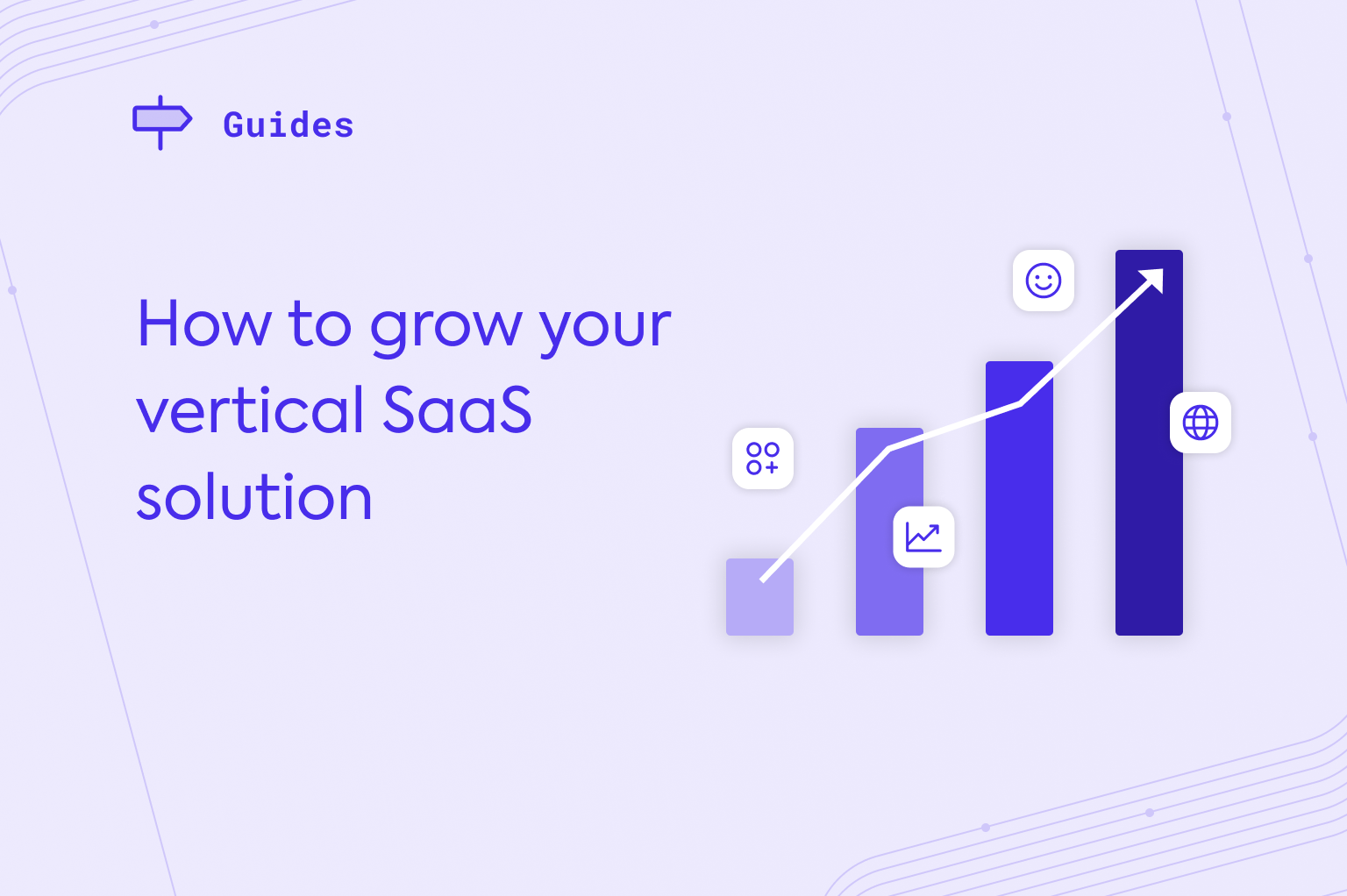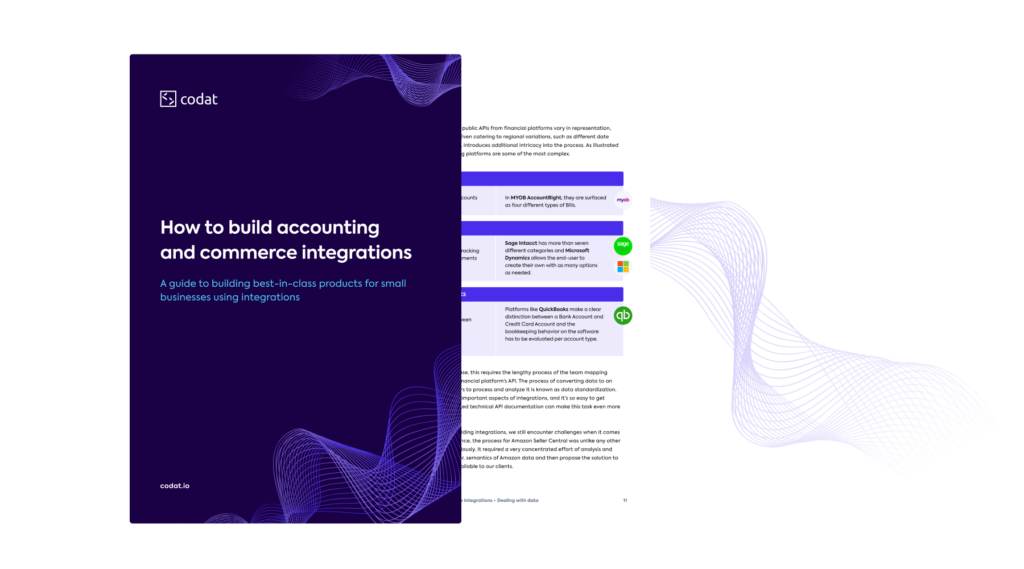
What’s the key to success in vertical SaaS? 🗝️
Vertical SaaS is shaking up the tech landscape in a big way. In their relatively short time on the scene, specialist providers such as Toast, Blend, and Procore have experienced significant success, and the market cap of public vertical software companies has increased by an impressive 815% in the last ten years. It’s no real surprise, then, that vertical SaaS was a popular discussion topic during New York Fintech Week this year. But, what exactly is it, where do the opportunities lie, and how can vendors make the most of this trend?
SaaS, but make it vertical
As a concept, vertical SaaS is refreshingly simple. Rather than catering to a wide range of industries, vendors zero in on niche problems faced by businesses in specific verticals like eCommerce, construction, hospitality, or healthcare. This just makes sense. SMBs are incredibly nuanced, they come in all different forms, and one-size-fits-all approaches rarely meet their unique needs,
The vertical SaaS solutions experiencing the most success have relatively small addressable markets but huge aspirations.
They plan to own their niche by becoming their customers’ central operating system. For instance, imagine a world where an eCommerce store could order all of their stock through the same vendor they use to access credit, repay their loans, accept, process, and reconcile their payments, manage shipments, and even customer communication. By placing themselves at the very heart of the operation, the vendor becomes indispensable, customer’s become less likely to churn, and retention is pretty much guaranteed.
Moreover, each new feature that’s introduced increases the solution’s value as a whole, enabling vendors to make the most of usage-based pricing models and increase overall profits. Sounds great, right? But how can this actually be achieved?
Native integrations are key
Robust, native integrations are fundamental. Not only are they quickly becoming a customer expectation, but they are also crucial to making the most of this opportunity.
It’s clear that the future leaders in this space will have connectivity at their very core. But, factoring the build and maintenance into busy roadmaps is a big challenge. So, here are some reasons why working with an integration provider just makes sense.

1. Keep your customers happy 😊
It’s now well documented that SMBs use more applications than ever before. According to Blissfully, the average small business relies on 102 different apps to handle its operations. This seems like a shocking figure on the surface but let’s take a look at a real-life example: your local family-run coffee shop. They most likely have a point-of-sale system, inventory management solution, accounting software, payroll system, and multiple marketing platforms, including advertising software. See how quickly it all adds up?
In order for the coffee shop to run smoothly, all of these systems need to speak to each other. Unfortunately, they rarely do. Your friendly local business owner is forced to spend around 40 hours every month reconciling data between applications. Think about all the ways they could put that time to better use. They could focus on growing their business or simply have more time to spend with their family.
Customer retention is hugely important when it comes to vertical SaaS. With a relatively limited total addressable market compared to horizontal providers, keeping your customers happy is pivotal to becoming a market leader in your niche. Addressing this pain point is one of the most effective ways to do that.
Introducing accounting automation serves two core functions: it relieves your SMB customers of considerable administrative burden and creates a greater reliance on your solution. The more ingrained you are in your customers’ day-to-day operations, the stickier they will become. At Codat, we often see this first-hand with providers we work with. For instance, one point of sale provider found that integrated customers were half as likely to churn.
2. Introduce new features 🏎️💨
When considering your product strategy, it’s essential to explore the role integrations can play in supporting your long-term growth. Many vendors have successfully leveraged native integrations as a gateway into new product lines. For instance, a vendor may begin life as a specialist booking system for hair salons before expanding into accepting payments and offering loans. This has really positive results – research shows that adding a fintech layer to a vertical SaaS platform increases revenue by 2-5x per customer.
Let’s take a look at how this may work in practice, using the example of a fictional accounts receivable tool for the construction industry:
| Functionality | Fees |
|---|---|
| AR tool for construction industry | $12 per month per customer |
| Adds AR functionality | +$3 per month per customer |
| Adds payment processing | +0.5% per transaction |
| Adds cross-border payments | +1% per transaction |
| Adds embedded finance | +5% funding fee |
As you can see, embedded finance and payment processing, in particular, present significant opportunities for vertical SaaS vendors to create stickier customers and additional revenue streams. Several vertical SaaS providers, such as Toast and Mindboy, now generate up to half of their total revenue from payment processing.
Access to the right data is a hard requirement for features like this. With an integration provider, go-to-market can be achieved in a fraction of the time and at a fraction of the cost. For help selecting the right provider for your business, read our understanding accounting coverage blog.
3. Move upmarket ☝️
Going after mid-market businesses with larger teams and higher turnover is an effective way to increase revenue. To serve these customers, you’ll need integrations to systems they use regularly like Sage Intacct and Oracle NetSuite. Even with considerable experience building and maintaining integrations, you’ll likely encounter obstacles, as these systems tend to behave very differently from the likes of QuickBooks and Xero.
A specialist team of Engineers with experience in different languages as well as Analysts with extensive knowledge of accounting principles and how accounting data behaves is essential to be successful in this space. Building up this level of expertise in-house takes time and gets pricey, so working with an established integration provider often makes much more sense.
4. Expand internationally 🚀
With VC backing, many vendors have their sights set on international expansion to supercharge their growth. This is particularly true for verticals that can go live overseas without considering different governmental regulations, such as childcare management software. But, building to the different systems SMBs rely on is one thing that materially slows vendors down.
When it comes to expanding overseas, many vendors find their existing integrations, which they have already spent considerable time and money building, are simply not fit for purpose.
This is because the typical SMB tech stack varies greatly depending on geography. Xero, for instance, is popular among UK SMBs but only used by a small proportion of businesses in the US. This means building a complete set of integrations for every new geography you want to expand into. In addition to being incredibly costly and time-consuming, building and maintaining these integrations yourself is demanding technically. Each financial platform has a different data model and will present its own unique set of challenges. Your approach, as well as the resources required, will vary significantly depending on the integration. Explore our How to build accounting and commerce integrations guide for more information about the process.

Codat can help
Codat makes it quicker and easier to build fintech products, like corporate cards, business dashboards, or SMB lending applications, that are integrated with the other systems small businesses use.
A number of leading vertical SaaS providers, including Connect Childcare, JobAdder, and Fixably, already use Codat to vastly simplify the task of providing a connected experience to their customers by consolidating multiple data sources, so they can move data around seamlessly and at scale.
To learn more about our solutions, sign up for a free account—or get in touch with a Codat specialist by filling out the form below.